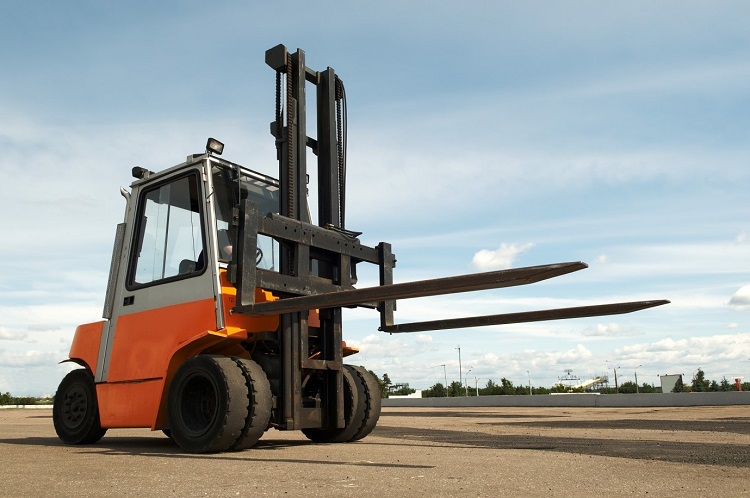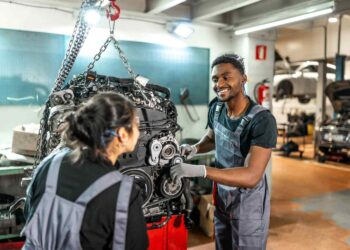When it comes to starting a major construction project, there’s nothing more important than having the right tools for the job.
It’s also important to keep in mind that every project is different, thus you’ll have to figure out what equipment is necessary for moving earth, building materials, and maximizing productivity.
One of the best tools for any construction project is forklifts. These are versatile machines that help make even the toughest jobs easier to complete.
This article takes a look at how to choose the best forklifts for your project.
After all, not every forklift is created equal. Keep reading to get the inside scoop on finding the right construction forklifts to meet your needs.
Types of Forklifts
Let’s start by discussing the various types of forklifts you might need for the job.
A standard warehouse forklift is the common type of forklift used in enclosed spaces such as warehouses, docks, and other loading zones. These are incredibly versatile machines available in a number of sizes and are easy to learn to operate.
A walker stacker forklift isn’t technically considered a forklift but is close enough to qualify for construction purposes. This type of machine is typically used to transport materials from location to location within a warehouse and is operated by simply working behind it.
A telescopic handler is a bit of a hybrid of forklifts and cranes. The best thing about this type of machine is the ability to reach loads that are out of reach of traditional forklifts. They also take up less space, making them easy to use in crowded environments.
An order picker is a very basic type of forklift used specifically to pick items from warehouse racks for shipment. The difference between this machine and a traditional forklift is the order picker’s ability to lift the operator up where they can find an item on their own.
A counterbalance forklift provides incredible stability for working with extremely heavy loads. This makes them ideal for worksites where bulky materials need to be unloaded from trucks and transported from place to place.
Industrial forklifts are most commonly used in work environments that require the mobility and reliability of a standard forklift with the practicality of a telehandler.
These are the most common types of machines found in the majority of work environments, and each can make the task of moving loads faster and more efficient.
Size
When looking for the right forklift for your needs, size is one of the most important factors to consider. After all, you need to have confidence that your forklift can handle any load at your worksite.
The most common sizes include mini or compact, standard, and large.
A mini or compact forklift typically weighs up to 10 tons and is ideal for small loads in small spaces. A standard-size forklift weighs between 10 and 45 tons, is incredibly versatile, and is perfect for most construction sites. A large forklift gives you the ability to handle the maximum volume, typically weigh up to 95 tons, and enables you to deal with huge projects.
Load Capacity
Now let’s take a look at load capacity.
After all, it won’t do any good to rent a forklift that can’t handle the loads required on your job site. The key is to select a bucket that’s adequate for moving cargo without being too heavy for the machine itself.
One of the keys for determining the load capacity that’s best for your construction project is to first look at the materials the forklift will be handling. For example, heavy iron girders will require a forklift with enough load capacity and the power to easily move them from one location to another.
You should also consider the need for add-ons so that you can increase your load capacity.
Engine Power
Next, you should take a close look at the engine power of each type of forklift. That’s because engine power will determine the forklift’s ability to move extremely heavy loads, especially when it needs to travel from one side of the worksite to another.
Some of the characteristics to consider include the bore and piston stroke. Just keep in mind that every forklift will offer different engine power, so always pay close attention to the contrasting engines on each machine.
Here is a resource where you can buy a Princeton forklift.
Weight
You’ll also need to look at the overall weight of the machine. This includes factors such as the apex operating weight, the operator, as well as the cargo it will be lifting.
Why is weight such a significant consideration? Because you need to make sure that the weight won’t end up causing damage to your worksite.
Overall Performance
Every construction job is different. Thus you will have different needs. This is why you’ll need to keep the overall performance of your forklift in mind when choosing the best machine for the job.
No matter if you plan to rent or purchase a forklift, it needs to be designed for the job at hand. This means you’ll need plenty of power, load capacity, and reach.
The best strategy is to discuss your needs with an expert. The more information you can provide, the better. A professional with decades of experience can help you choose the perfect machine for your project, while also helping you stay within budget.
Renting vs Buying
Both are perfectly good options. The biggest thing to consider when deciding to rent or buy a forklift is to look at your budget and calculate how long you’ll need the machine for upcoming construction projects.
Renting is obviously less expensive in the short run, but purchasing your own machine will provide greater flexibility and save money in the long term.
A Contractor’s Guide to Choosing the Best Forklifts for Your Next Big Project
There’s nothing easy about tackling a big construction project. Fortunately, this guide will help you find the best forklifts jobs of any size.
Keep exploring the topics on this blog to discover more great small business and lifestyle advice.






